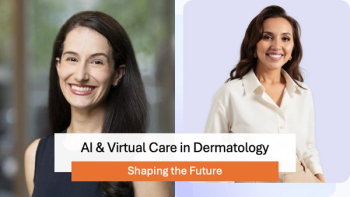
Using 3D Technology To Mimic Human Skin
Mayo Clinic researchers have developed a process that uses human cells as inks, dubbed bioinks, to print natural tissue-like structures in three dimensions.
Could 3D technology lead to a new treatment for inflammatory skin disease? Mayo Clinic researchers believe the answer is yes. They’ve developed a 3D prototype they describe as “the most human-like skin model” for studying atopic dermatitis and other skin conditions.
The 3D technology brings new options, says
The process they’re using is bioprinting, which uses human cells as inks, called
“We can print the skin from cells of patients with atopic dermatitis or eczema," says Wyles, who is the senior author of a report about the prototype in
The printing process is “sort of like creating layers of a tiered cake with different cell types," Wyles adds. "You start at the bottom (the dermis), then you add the next layer (the epidermis), and the scaffold material acts as the frosting to connect the layers. The printed skin is put into an incubator where the cells can communicate with each other, expand and form bioprinted skin."
However, the researchers have their job cut out for them. Three-dimensional bioprinting uses biomaterials, cells and culturing techniques to create “biologically equivalent models with key features to replicate the phenotype and function of the desired organ.” That means incorporating many types of cells, including melanocytes (which form skin pigment), keratinocytes (which allow for skin renewal), and fibroblasts (which form a connective tissue). The cells are printed in layers that stratify and mature into full layers of skin. The 3D bioprinting model will need to replicate that complexity, but has yet to incorporate the sweat glands, blood vessels, skin follicles and nerves found in native human tissue, the researchers say. Also, the biomaterial needs specific characteristics: For instance, in the case of grafts for blistering skin conditions, the biomaterial should have strong water-biomaterial interactions that modulate cell adhesion—without that, the bioink may not be compatible with the grafted site and will be rejected.
The technology has the potential to transform clinical and laboratory practice, Wyles says. "This 3D model more accurately recreates disease, creates surgical grafts and provides the ability to test new therapies." More research is needed, though, to bioprint an exact replica of “patient-specific” human skin with atopic dermatitis.
Newsletter
Get the latest industry news, event updates, and more from Managed healthcare Executive.





















































